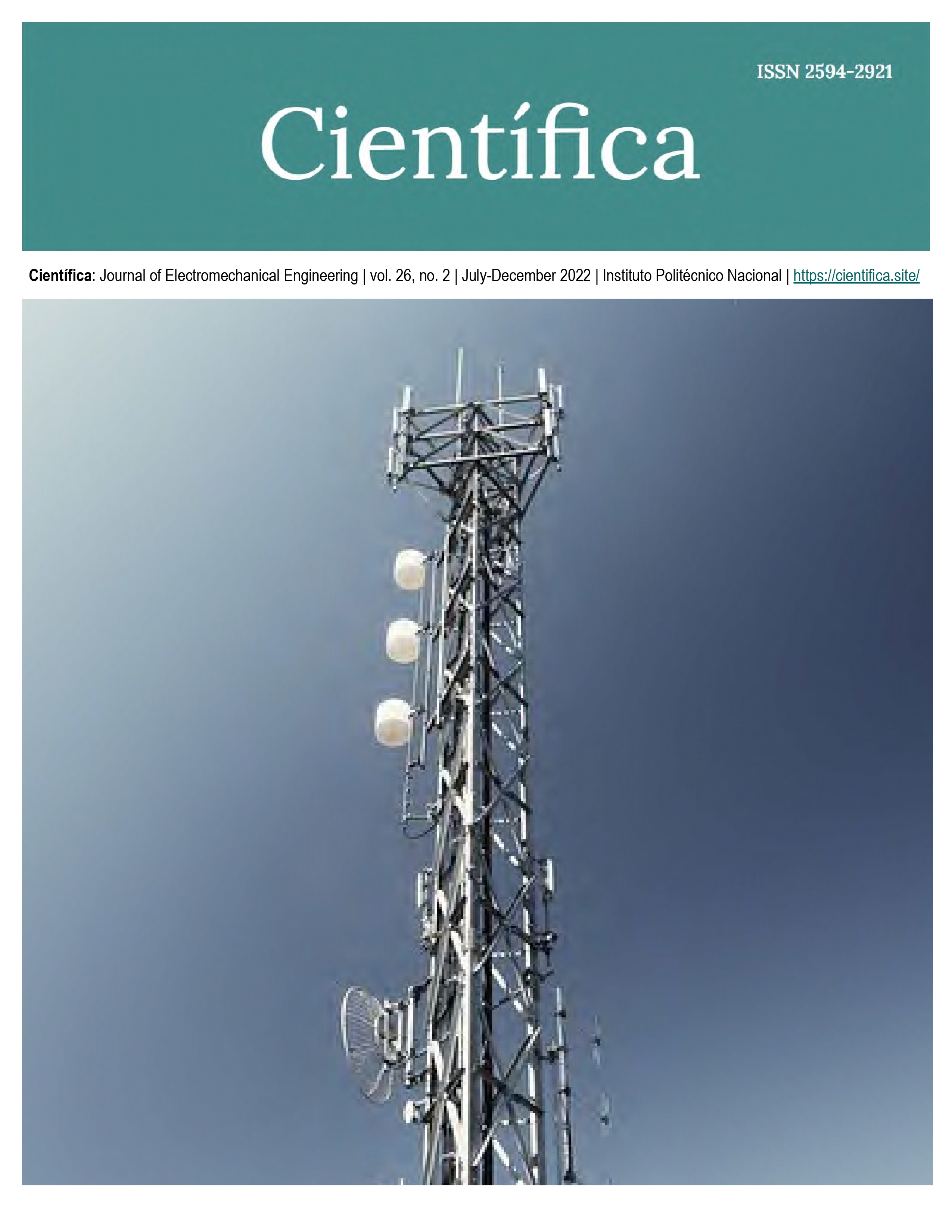Numerical modeling of an elastomer (NBR) subjected to axial load
DOI:
https://doi.org/10.46842/ipn.cien.v26n2a06Keywords:
elastomer, hyperactivity, ASTM D412, CAD/CAE, MarlowAbstract
Currently the product manufacturing market demands the improvement of materials with lower cost and higher quality. The present investigation was developed in an automotive factory in Mexico where high-pressure hydraulic hoses are manufactured, this company search to innovate the materials to be able to compete against other brands. Making products with new materials implies develops experimental tests that involve time and cost. This project sought to reduce the time and cost of testing by analyzing the base material with CAD/CAE tools. The base material of the hose is an elastomer, therefore a methodology for obtain the model number with the hyperplastic properties to know the behavior before taking construction tests. The finite element analysis was performed with specialized software, which allowed the analysis of elastomers based on the ASTM D412 methodology, referring to tests of vulcanized rubbers subjected to pressure, establishing the geometry and boundary conditions. The study found that the constitutive model with the closest approximation to the hyperplastic behavior for vulcanized rubber was the Marlow model.
References
X. Leiceaga, "Desarrollo de una plataforma de diseño e ingeniería naval", Ingenieria y Ciencia , vol. 1, nº 1, pp. 29-43, 2005.
D. Field , "Educaction and training for CAD in the industry", Computer-Aided Design, vol. 36, pp. 1431-1437, 2004, https://doi.org/10.1016/j.cad.2003.10.007
L. Wang, "Meta-modeling if high-fidelity FEA Simulation for efficient product and process desing in additice manufacturing", Additive Manufacturing, vol. 35, pp. 1-2, 2020, https://doi.org/10.1016/j.addma.2020.101211
M. Candal , "Plastic products design optimization using integration between CAD/CAE/CAM and PR: Study Case", Ciencia e Ingeniería, vol. 26, pp. 121-130, 2005.
L. Wenbo, "Flexural fatigue life prediction of tooth V-belt of reinforced rubber", International Journal of Fatigue, pp. 1-29, 2018, https://doi.org/10.1016/j.ijfatigue.2018.02.025
L. Quian, "Fatigue Life prediction of a ruber mount based o test of material properties and finite element analysis", International Journal of Fatigue, vol. 16, pp. 2304-2310, 2009, https://doi.org/10.1016/j.engfailanal.2009.03.008
L. Shaohu, "Experimental and numerical simultaion study on fatigue life of tubing with typical defects", Journal of Petroleum Science and Engineering, pp. 212-218, 2020, https://doi.org/10.1016/j.petrol.2020.108212
RMA, Hose HandBook, Washington: EPG publications , 2009, aviable: https://www.hosexpress.com/media/import/Hose_Handbook.pdf
RUC, Manual del caucho, México, 2014, aviable: https://www.academia.edu/6831626/Manual_del_Caucho
SIMULIA Dassault Systems, "Abaqus Therory Manual", SIMULIA, 2010, available: http://130.149.89.49:2080/v6.10ef/books/stm/default.htm. [Último acceso: 21 Enero 2022].
H. Panadero, "Metodologia para el análisis de esfuerzos y fatiga de ejes y obtencion del factor de intencidad de tensiones mediante XFEM en ABAQUS", Universidad de España, Madrid, 2014.
C. Azurmendi, "Modelización estructural de un neumático de competición por el metodo de elementos finitos", Universidad de Sebastion, San Sebastian, 2014.
D. Barragán , "Simulacion numérica de un ensayo de fatiga de un nuevo concepto de suspención para camiones pesados con elementos no lineales", Universidad Autónoma de León, Nuevo León, 2017.
Q. Estrada, "Procedimiento numérico para el modelado de los materiales hiperlásticos sometidos a tensión", Memorias del XIX Congreso Internacional Anual de la SOMIM, pp. 1079-1084, 2013.
E. Ramirez, "Simulación y análisis del comportamiento de un componente elastomérico de un sistema técnico. usando el método de los elementos finitos", Universidad EAFIT, Medellin, 2008.
J. Moraleda , "Micromecánica de elastómeros porosos y reforzados con fibras", Universidad Politécnica de Madrid , Madrid , 2009.
A. Diaz, "Método de mallado y algoritmos adaptativos en dos y tres dimensiones", Universidad Politécnica de Valencia , Valencia , 2000.
M. Espinosa , "Obtención del módulo de elasticidad y razón de poisson", Universidad Autónoma de Nuevo León, Nuevo León, 2000.
Downloads
Published
Issue
Section
License
Copyright (c) 2022 Instituto Politecnico Nacional

This work is licensed under a Creative Commons Attribution-NonCommercial-ShareAlike 4.0 International License.

